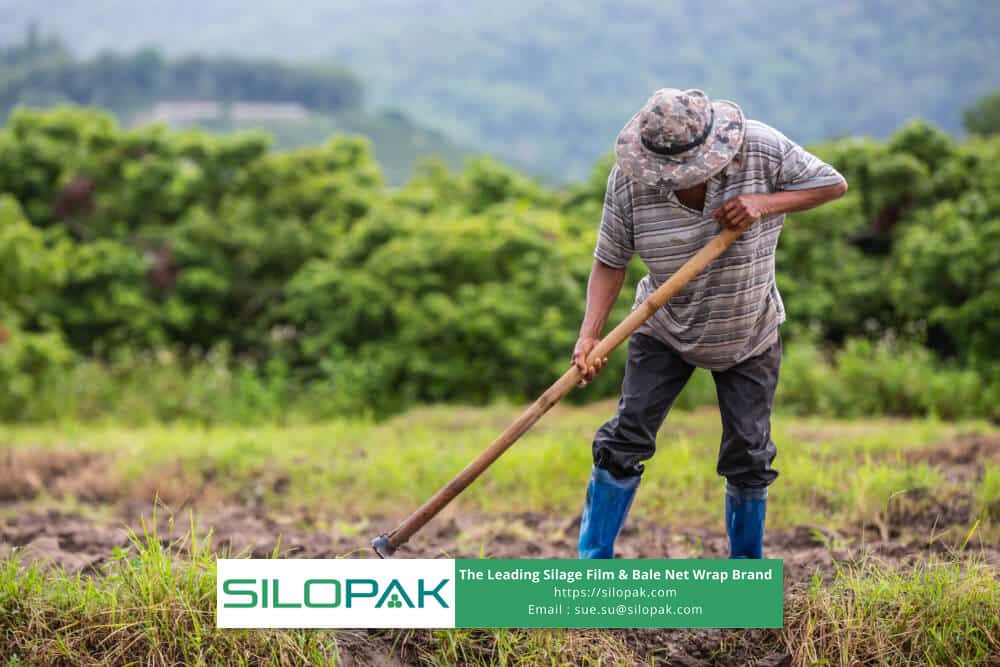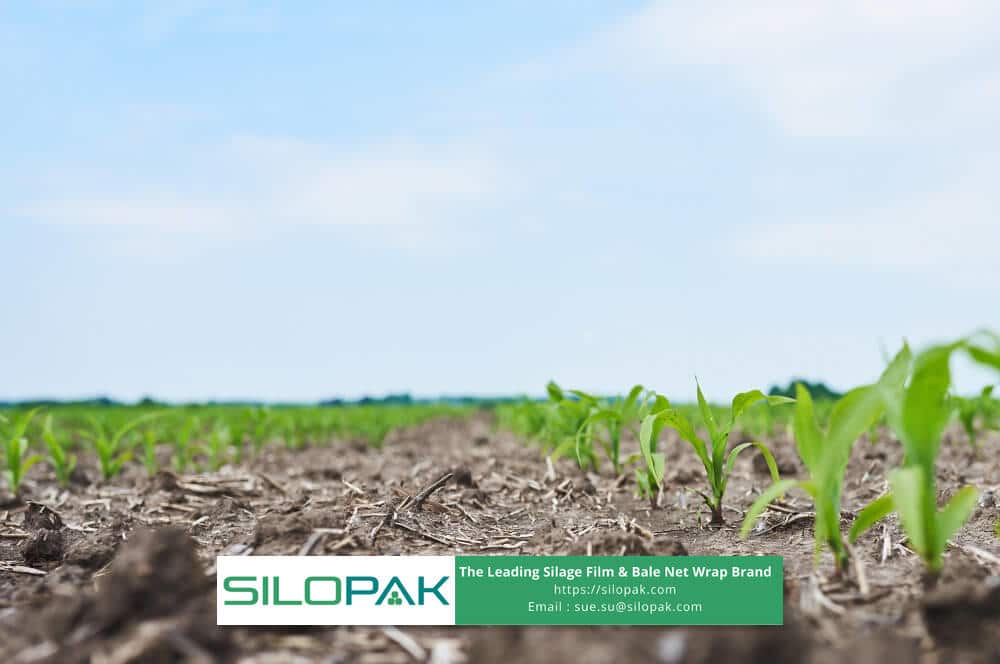
The period after harvest is the period when crop residues cleaning takes place. You can collect various crop residues such as wheat straw, oat straw, and barley by rolling it and then wrapping it for agricultural purposes. You can make it into animal feed, compost, or bedding for livestock on the farm. There are farmers who work manually to carry out the cleaning and there are also those who use machines.
The machine has an automatic arm to collect harvest residues whether in the form of stems, leaves, pods, stumps, stalks as well as grains, molasses, roots, husks, and bagasse which are residues after processing the crop into useful sources. After that they wrap it into bales of various sizes and shapes with good quality plastic or silage film.
Sometimes one bale requires 4 to 6 layers of plastic to maintain the quality of animal feed during the fermentation process. When you use good LLDPE silage film, it can maintain nutrients in the bales and protect them from potential damage such as mold.
Fungus and lice often land on bales that easily get oxidized or exposed to continuous rainwater without proper silage protection. Meanwhile, the risk of rotting can occur due to continuous exposure to sunlight during the day and high humidity at night.
So, what kind of crop residues can you use?
contents
Crop Residues as a Source with Economic Value
Valuable waste may be a suitable term for crop residues today. People are starting to embrace the trend where they must be able to utilize all crop residues so that these residues can become agricultural by-products that have their own economic value.
Nowadays, the competition in its use has become a hot topic in the world of animal husbandry. They begin to learn the various uses of crop residues and how it makes extra money.
Crop residues can be an economically valuable resource because they have many benefits. You may find them when you try to collect any plant residues and treat them right.
Increase Soil Fertility
We know that the price of commercial fertilizer is around $21 and the price fluctuates from month to month. Farmers need commercial fertilizer to replace nutrients lot in the soil.
Especially if it’s after harvest. Meanwhile, crop residues such as corn stalks can add nitrogen, phosphate, and potassium elements from the dry material. Instead of just throwing away all this valuable waste, it’s better to process it into fertilizer for your land.
So, the soil can have a good structure with soil productivity continuing to increase. Apart from that, your soil will be a good habitat and energy source for soil organisms such as earthworms and other microorganisms. This will make the soil more fertile.
Become Commercial Raw Materials for Gasification Processes
Apart from being a raw material for straw, fiberboard, liquid fuel, and paper, crop residues also have great potential in creating raw materials in the manufacture of synthetic gas. This gas consists of hydrogen and carbon monoxide which researchers can develop to produce electricity, ethanol, diesel, and gasoline.
Meanwhile, crop residues which have the characteristic to produce heat and steam shortly after the combustion process have the potential to provide resources for heating, cooking, producing electrical power, and driving motorized vehicles at low cost.
Animal Feed and Bedding
Farmers usually let their beef cattle roam the corn fields after harvest so they can eat crop residues. Apart from that, farmers can also store crop residues for animal feeding during the winter.
The way to store it is by making bales of various sizes with premium silage film from Silopak wrapped around them. Then they can use the remaining crop from straw as bedding for livestock.
Crop Residues Barley Straw is the Best Choice

Your ruminants and donkeys can become healthier with additional food from crop residues of barley straw. Apart from being a food ingredient, this straw can be a bedding for livestock.
You can process this barley straw from the first process of cutting, collecting, drying, and storing the bales. The right time to make barley hay from crop residues is around the end of June, July, and August.
First, you can cut the hay using a lawn mower. Then let the sun and wind dry the hay naturally in the field. After that, you can move the pile of hay to the baler wrapper machine where big or small bales will become a new shape of barley straw.
Meanwhile, you can also use crop residues from wheat straw which has more fiber than barley straw. However, livestock usually find it difficult to chew it. But you can still give wheat straw feed to younger livestock. Next, for your information, wheat straw is not good as livestock bedding.
One day if there is a shortage of barley straw or wheat straw, you can still use crop residues from oat straw which is higher in calories than barley or wheat straw. However, you need to be wise in feeding livestock because it will affect their weight gain. Skinny livestock is your target when feeding oat straw.
Apart from straw from the three plants above, you can also use crop residues from other plants such as flax, rye, and rice.
Focus on the Plastic Wrap of Your Crop Residues
The success of wrapping crop residues into bales of animal feed is from the use of plastic wrapping and the proper baler wrapper machine. The best bale wrapping plastic comes from experienced silage film and net wrap producers such as Silopak. We have become loyal friends of farmers from all over the world who want their crop residue bales to be perfect even though it is just waste.
However, this valuable waste can be a source of side income for livestock owners by selling crop residue bales of various sizes. We have been carrying out export activities for silage film and net wrap products since 2011 to various countries. You may be able to find our brand from some of our suppliers in your country. Then there are many OEMs also who take our quality products.
